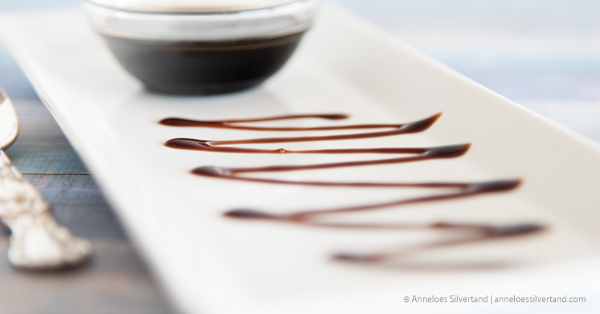Always make sure you have the ingredients to make your own Balsamic Glaze! Drizzle some glaze over your salads, use it to make glazed meat and fish or finish your dessert with it. Are you looking for more ingredients to make yourself? Select [Homemade] under [Meals] on [the recipe page].

If you have any dietary restrictions, always check the labels on the products you are using to make this recipe with. They will tell you if, for instance, your ingredient might contain traces of nuts, your products are made with dairy or if there is a chance the ingredients have come into contact with gluten-containing food or equipment.
Would you like to know more about what to look for when you are buying your products while you have dietary restrictions or preferences? Are you preparing food for someone who does? Check out my articles on [Food and Health] and learn more!
Do you like the Balsamic Glaze recipe? Please share it or leave a comment and follow Truthful Food on social media so that you won’t miss out on anything new and delicious!
Ingredients
- 65 g Balsamic Vinegar - [See good to know section.]
- 35 g Maple Syrup
Other things you need
- Food Scale
- Stove
- Pan
- Whisk
Instructions
- Weigh your ingredients.
- Put them in the pan and place the pan on the stove.
- Wait till the mixture is simmering and then turn down the heat so it will gently keep simmering. [See good to know section.]
- Let the Balsamic Glaze simmer for about 10 minutes or until your glaze has reduced to about half its size. Make sure you stir regularly.
- Let the Balsamic Glaze cool down and enjoy!
Good to know
- Storing: Make sure to store your glaze in an airtight container in the refrigerator if you are not using all of it right away.
- Shelf life: The glaze will stay good for several weeks if stored correctly.
- Organic: To make this recipe organic, only use organic ingredients.
- Tip: Stir or shake before you use it if you let it sit for a while.
- Tip: When estimating how much you want to make, remember that you will end up with about half of the amount that you started out with.
- Heating vinegar: I recommend that you open a window or turn on the exhaust hood. The smell of the balsamic vinegar, when heated, is rather pungent.
Nutritional Information per Portion
Know What You Eat
Both when buying food or when making your own, it is important to inform yourself about the nutritional value. Have a look at the nutrition label, learn about your serving size and what nutrients this product will bring to the table.
If you want to compare different products and their values, it is easier to look at a label where the values are given per 100 grams. This way you get a better understanding of the categories certain products belong to when it comes to nutritional values. Is this a product with a high sugar content? Does it contain a lot of fibre? How does this product measure up if I am looking to stick to a low-sodium diet?
Keep in mind that if you are looking to eat healthily, you should not just avoid eating fat and/or sugar. We need both in our daily diet. Make sure however to be aware of where you get your lipids and sugars from. As a rule of thumb, you could say; variation is very important in your diet and in general, the closer your food is to come straight from the source, the better.
If you want to read more about healthy food choices, check out my article [Healthy Food Choices]. Truthful Food also has a continuously growing article category solely focusing on specific ingredients and nutrients for everyone who wants to take a closer look at what you can find in your food.
*All given nutritional information is an indication. Due to differences in how ingredients are produced, where they are purchased and how the recipe is prepared, nutritional values may vary.
Leave a Reply